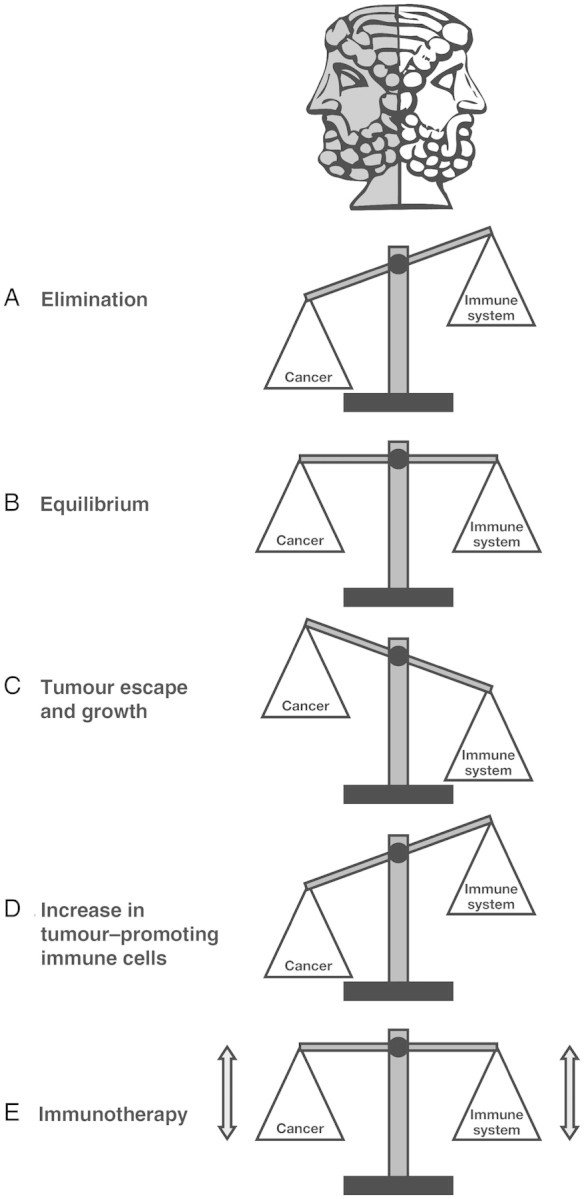Figure 1.

Janus was the Roman god of beginnings and transitions, depicted as two-faced since he looks to the future and the past. In the same way that the Janus principle can be used to illustrate the past accomplishments and future opportunities for scientific progress, the two faces could also be used to represent two sides of the same story; in this case, immune function/tumour rejection and immune dysfunction/tumour promotion. Via the process of immunosurveillance, the immune system can specifically identify and eliminate tumour cells on the basis of their expression of specific antigens (A). However, in cases where the immune system is not able to completely eliminate the cancer, a state of equilibrium develops whereby the tumour does not progress or further metastasize (B). Eventually, if the immune response fails to completely eliminate the tumour, cancer cells that can resist, avoid, or suppress the antitumour immune response are selected, leading to the tumour escape and a progressively growing tumour (C). In addition, infiltration of tumours by inflammatory immune cells can result in a state of chronic inflammation that maintains and promotes cancer progression and suppresses the innate anticancer immune response (D). The aim of immunotherapy is to modulate tumour immunity to change the ongoing immune response from tumour-promoting to tumour-rejecting, thus providing durable and adaptable cancer control (E).
